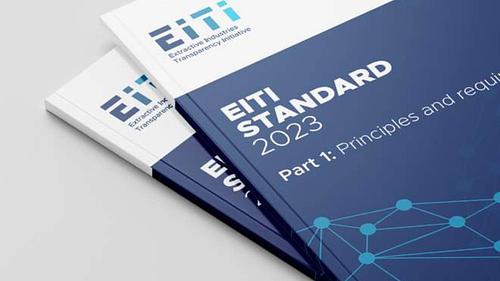
Context and learning objectives
The issue of a fair distribution of mining and petroleum rents often comes back to the forefront, especially when commodity prices are high.
This course first reviews the key challenges of the extractive sector in Africa, then explains the different fiscal and parafiscal instruments that can be used to tax mining companies. Participants will learn step-by-step how to model the sharing of rents.
Throughout the training, we will build an Excel-based cash flow model to estimate how resource rents are split between the State and investors.
This is the first online module of the “Natural resource management for development” programme.
This module aims to help you situate the issue of economic rent sharing in the context of African resource producers.
This module aims to help you understand why and how the extractive sector is subject to specific taxation.
The objective of this module is to understand the concept of economic rent.
The objective of this module is to be capable of moving from the theory to the estimation of economic rent in practice for an extractive project.
The objective of this module is to be able to estimate the mining rent in Excel.
The objective of this module is to be able to estimate the petroleum rent in Excel.
The objective of this module is to understand how taxes on production work (application fees, bonuses, surface fees, ad valorem royalties), their methods of calculation as well as their economic implications on an extractive project. After a theoretical review, we will move from theory to practice of tax calculation in the extractive sector.
The objective of this module is to be able to calculate the taxes on production in Excel in the mining sector.
The objective of this module is to be able to calculate the taxes on production in Excel in the petroleum sector.
The objective of this module is to understand how depreciation functions, which constitutes a deductible expense in the calculation of the corporate tax base. For this, we will review the different depreciation methods (linear, decreasing, pooling) and their calculation methods.
The objective of this module is to be able to calculate the depreciation expenses in Excel in the mining sector.
The objective of this module is to be able to calculate the depreciation expenses in Excel in the petroleum sector.
The objective of this module is to understand the operation of loans whose interest constitutes a deductible charge in the calculation of the corporate income tax base. For this, we will review the different methods of repayment of a loan (constant amortization, constant annuities) and their methods of calculation. We will also see that the swelling of financial charges can be a means of tax optimization via under-capitalization.
The objective of this module is to be able to calculate the financial expenses in Excel in the mining sector.
The objective of this module is to be able to calculate the financial expenses in Excel in the petroleum sector.
The objective of this module is to understand production sharing. In the oil sector, it is indeed common for the contract to provide for the sharing of production between the state and the contractor, which first involves calculating the cost oil and then sharing the profit oil.
The objective of this module is to be capable of modeling production sharing in Excel for the oil sector.
The first part of this module aims to understand how the loss carryforward works, which constitutes a deductible charge in the calculation of the corporate income tax, as was the case for amortization expenses and financial expenses.
The second part of this module takes up these elements to explain the operation of income taxes such as corporate income tax and minimum tax, their calculation methods as well as their economic implications for an extractive project. After a theoretical reminder, we will move from theory to practice of tax calculation in the extractive sector.
The objective of this module is to be able to calculate the corporate income tax and the minimum tax in Excel in the mining sector.
The objective of this module is to be able to calculate the corporate income tax in Excel in the petroleum sector.
The objective of this module is to understand the average effective tax rate (AETR). After a theoretical review, we will move from the theory to the practice of its calculation in the extractive sector.
The objective of this module is to be able to calculate the average effective tax rate in Excel in the mining sector.
The objective of this module is to be able to calculate the average effective tax rate in Excel in the petroleum sector.
The objective of this module is to understand the operation of the resource rent tax, its method of calculation as well as its economic implications for a mining project. After a theoretical review, we will move from the theory to the practice of calculation of the tax in the mining sector.
The objective of this module is to be able to calculate a resource rent tax in Excel in the mining sector.
The objective of this module is to understand the direct participation of the state in the capital of the local company as well as the witholding tax that can be levied on dividends, their methods of calculation, as well as their economic implications for an extractive project. After a theoretical reminder, we will move from the theory to the practice of calculating these levies in the extractive sector.
The objective of this module is to be able to calculate the state participation and the withholding tax on dividends in Excel in the mining sector.
The objective of this module is to be able to calculate the state participation and the withholding tax on dividends in Excel in the petroleum sector.
You have arrived at the end of this training. Congratulations! Now it's up to you to apply the skills you have acquired by performing simulations in your Excel model. The validation of all the quizzes located at the end of each module is the condition for obtaining the certificate of successful completion of the training.
You have arrived at the end of this training. Congratulations! Now it's up to you to apply the skills you have acquired by performing simulations in your Excel model. The validation of all the quizzes located at the end of each module is the condition for obtaining the certificate of successful completion of the training.
The goal of this module is to understand what a feasibility study is. This document can serve as a source of economic and fiscal data for the rent-sharing model. The accuracy of the data entered into the model is crucial, as the quality of the modelling results depends on it.
This module covers key concepts in tax and mining law. Knowing the relevant legal texts—and being able to read and interpret them— is essential to understand a country’s fiscal system and collect the necessary tax data for the rent-sharing model.
Once the model is built, you need to be able to read it. This module shows you how to interpret outcomes and present them effectively—such as through a short briefing note supported by clear charts and graphs.
Once your mining rent-sharing model is complete, running simulations becomes easy: simply adjust the economic or fiscal data. This allows you to compare the results of multiple alternative scenarios with the baseline scenario.
Target audience
- Economists, lawyers, tax specialists, tax administrations, ministries of mines and hydrocarbons
- Other public and private professionals in Africa’s extractive industries
Format
This training is delivered online, offering learners complete flexibility through unlimited access to content, available 24/7 on the IHEDD distance learning platform. Each participant can progress at their own speed, depending on their availability.
To encourage exchange and mutual support, a forum is available in the training space, complemented by a WhatsApp group to create a community of learners.
In addition, regular virtual meetings (online classes) are organised with trainers and the learner community. These sessions allow participants to go further into the concepts covered, discuss challenges encountered, and obtain answers to questions.
Modalités
Cette formation est dispensée en ligne, offrant aux apprenant·es une flexibilité totale grâce à un accès illimité aux contenus, disponibles 24h/24 et 7j/7 sur la plateforme d’enseignement à distance de l’IHEDD. Chaque participant·e peut ainsi avancer à son propre rythme, selon ses disponibilités.
Pour favoriser l’échange et l’entraide, un forum est mis à disposition sur l’espace de formation, complété par un groupe WhatsApp permettant de créer une communauté d’apprenants.
En complément, des rendez-vous réguliers en visioconférence (classe virtuelle) sont organisés avec les formateur·rices et la communauté d’apprenant·es. Ces sessions permettent d’approfondir les notions abordées, d’échanger sur les problématiques rencontrées et d’obtenir des réponses aux questions.
Validation des acquis
At the end of the course, IHEDD will award a certificate on behalf of Ferdi, a recognised professional training organisation. This certificate states the name of the course and the total number of validated training hours.
To receive it, participants must pass a final quiz with a minimum score of 60%, and submit a completed rent-sharing model and a simulation note
Historique des sessions précédentes
- 17 Feb – 9 May 2023: 47 participants | 70% pass rate
- 26 Feb – 13 Apr 2024: 45 participants | 49% pass rate
- 6 Jan – 10 Mar 2025: 37 participants | 65% pass rate
Infos pratiques
- Durée : 18h30 (+ 6h mining + 5h30 petroleum) of self-paced work on modules + 13h30 of live virtual classes
- La formation est délivrée en English
- Matériel : Il est indispensable de disposer d’un ordinateur et d’une connexion internet.
- La formation est accessible aux personnes en situation de handicap.
- Prérequis : no previous academic qualifications needed, but participants should be comfortable using basic Excel functions
- Nombre de places : 45


